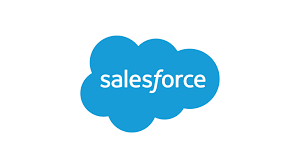Practical Solutions to Real MuleSoft Problems Every Salesforce Developer II Candidate Should Know

Strong 8k brings an ultra-HD IPTV experience to your living room and your pocket.
The Salesforce Certified MuleSoft Developer II exam is designed for integration professionals who possess advanced skills in designing, developing, and deploying complex MuleSoft applications within enterprise environments. This certification confirms your ability to create scalable, secure, and highly performant APIs and integrations using the Anypoint Platform. One of the most important topics in this exam is “Implement Performant and Reliable Mule Applications,” which focuses on developing solutions that can efficiently process high volumes of data, maintain low latency, and ensure fault tolerance. Candidates must master concepts such as payload optimization, streaming vs. in-memory processing, and batch processing for large data sets. Understanding the optimal configuration of thread pools, connection pools, and resource management is critical to avoid bottlenecks and maximize throughput. Additionally, candidates should be adept at designing comprehensive error-handling frameworks involving try-catch scopes, error propagation, custom error handling, dead-letter queues, and retry policies to ensure system resiliency and data integrity.
In real-world enterprise scenarios, developers frequently face challenges such as degraded application performance, high latency, and system downtime when integrations are exposed to heavy load or complex transactional workflows. For instance, unoptimized flows that process large payloads entirely in memory can lead to excessive JVM heap consumption, resulting in slow processing or out-of-memory errors. Similarly, inefficient use of connectors and lack of connection reuse can exhaust backend resources, causing timeouts and cascading failures. To tackle these issues, best practices must be implemented: connection pooling minimizes the cost of establishing new connections by reusing existing ones; caching strategies reduce redundant backend calls and speed up repeated data retrieval; asynchronous processing and non-blocking flows allow long-running operations to be decoupled, improving overall responsiveness. Implementing circuit breakers, bulkheads, and rate limiting helps protect the system from overload and gracefully degrade functionality under stress. Monitoring and logging via Anypoint Monitoring and Application Performance Management (APM) tools are essential to detect performance bottlenecks and errors early. To fully understand these concepts and apply them correctly, many candidates turn to ExamTopics Pro, which provides realistic, up-to-date Salesforce MuleSoft Developer II practice questions alongside detailed explanations and practical scenario-based exercises. This helps bridge the gap between theory and real-world application, ensuring deeper comprehension and exam readiness.
To prepare thoroughly for the Salesforce Certified MuleSoft Developer II exam, candidates should adopt a multi-step, hands-on approach. Begin by studying the official MuleSoft documentation, which covers advanced API design, data transformation patterns, flow orchestration, and security best practices including OAuth 2.0 and JWT. Building multiple real-world projects is essential to gain practical experience with diverse connectors (HTTP, Database, JMS, Salesforce), batch jobs for data processing, and implementing advanced error handling using Try scopes, On Error Continue, and Error Handlers. Regularly practice with Salesforce MuleSoft Developer II practice questions from reputable platforms like ExamTopics Pro to familiarize yourself with the exam style, time management, and tricky scenario-based questions. Joining MuleSoft developer communities, forums, and study groups can also provide valuable peer support, tips, and updated exam insights. Lastly, make sure to focus on performance optimization techniques such as thread pool tuning, streaming large payloads instead of loading them fully into memory, and designing fault-tolerant applications capable of handling real-time failures. Combining theoretical knowledge, practical hands-on work, and regular practice with real exam questions will significantly enhance your confidence and increase your chances of passing the exam on the first try, setting you apart as a skilled MuleSoft Developer II professional.
Note: IndiBlogHub features both user-submitted and editorial content. We do not verify third-party contributions. Read our Disclaimer and Privacy Policyfor details.



